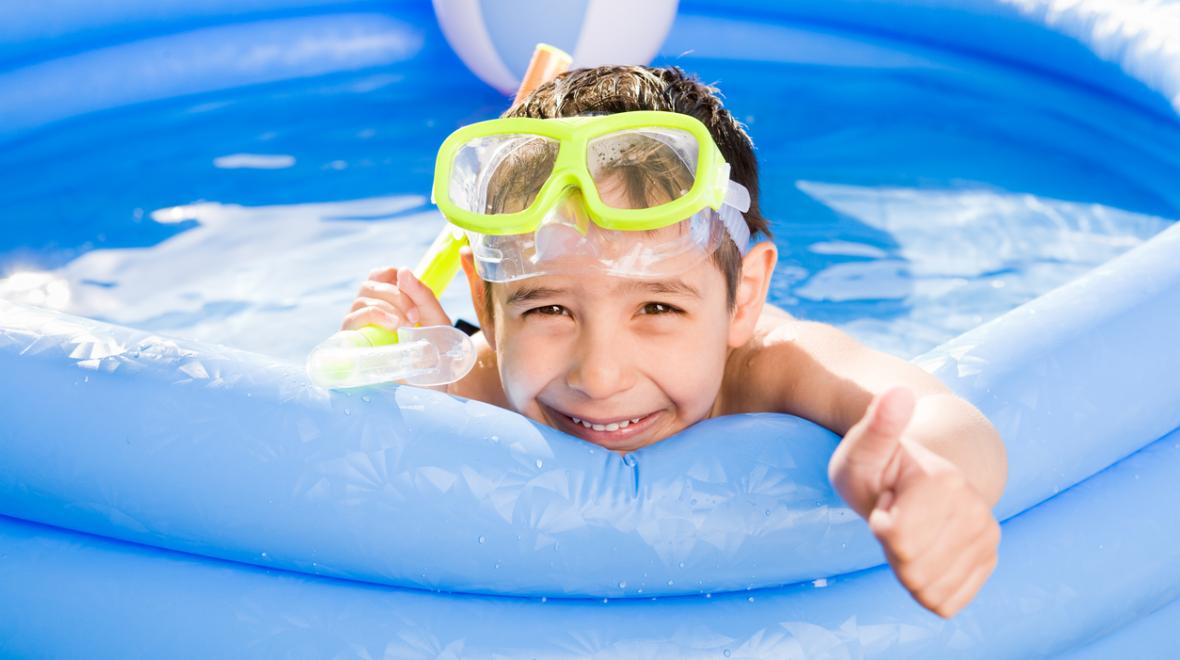
Editor's note: This article was sponsored by Seattle Children's Hospital.
Sticking closer to home this summer? Us, too. With many summer camps and child-care centers closed or dramatically limiting enrollment this summer, families are spending more time on their home turf this season. Staying at home helps reduce the risk of contracting a contagious illness, but more homebound hours may leave kids vulnerable to accidents such as burns and falls — injuries that increase during the summer months anyway.
Accidents at home already cause most childhood deaths and injuries, so spending more time at home may lead to more falls, burns and other preventable, sometimes fatal, childhood injuries — particularly if children have less adult supervision than they’d otherwise have, says pediatrician Mollie Grow, M.D., MPH of Seattle Children’s Hospital and UW Medical Center.
Clear danger: Preventing window falls
Summer’s open windows pose a serious safety risk for children, especially those ages 2 to 5 — window falls are a top cause of injury and death, particularly in places like Seattle where many homes aren’t air-conditioned and people keep windows open for air circulation, says Grow. “These falls are definitely tragic as a preventable cause of death and injury that most parents don’t think about.”
This doesn’t mean you have to suffer through sweltering days with tightly closed windows. But exercising caution and teaching children about the risks of playing on windowsills can prevent a terrible tumble. Remember that even windows with screens aren’t child-proof, since screens easily pop out and can’t support the weight of a small child. Other safeguards include:
- Open windows from the top down if possible.
- Don’t open windows more than 4 inches.
- Childproof windows with window guards (found at hardware stores and online).
- Keep furniture away from windows, especially shelving or other furniture that invites climbing.
- Teach children to play at least 2 feet from windows and never to sit or play on windowsills.
- Find more information on preventing window falls here.
On a roll: Bicycle and pedestrian safety
Daily walks and bike rides can help keep kids healthy this summer, especially after a spring spent learning remotely in front of screens. But as kids venture into their neighborhoods, whether on foot or on a bicycle, scooter, skateboard or another form of wheels, caregivers should take steps to keep them safe, says Grow. “You can’t underestimate the importance of good safety practices here, because motor vehicle injuries are a top cause of death for children, whether the child is a passenger or a pedestrian.”
In general, kids are ready for “independent mobility,” or unsupervised walks or bike rides around the neighborhood, at age 10 or so, according to Safe Kids Worldwide. But every child is different. Before turning yours loose on the streets, practice safe walking or biking routes together, emphasizing where, when, and how to safely cross the street. More safe steps:
- Never allow children to play ball or other games in the street.
- Teach children how to use crosswalks and to make eye contact with drivers before crossing.
- When sidewalks aren’t available, walk facing traffic as far to the left as possible.
- Model “distraction-free” walking or biking by pocketing your phone and limiting headphone use (if headphones are essential, keep one ear free) and encourage teens to do the same.
- If children need to walk or bike after dark, purchase lights and other visibility enhancers.
Insist on safe helmet use — not only for cycling, but for scooters and skateboards, too. “Anytime kids are operating wheels or riding in wheels of any kind, they should be wearing a helmet,” says Grow. Find low-cost or free bike helmets and resources for helmet fitting in King County here.
Splash safely: Reducing drowning risk
Packed public pools and chaotic pool parties may be paused thanks to health restrictions but drowning still poses a major safety risk for children this summer, says Grow. “We may not have swimming on the mind right now, since most local families don’t have pools, but drowning is still a risk, whether kids swim in pools or in the open water.” Make swimming safer with these tips:
- Caregivers should learn the basics of cardiopulmonary resuscitation (CPR). (Find online classes here.)
- Never leave children unsupervised around pools, hot tubs or open water.
- Don’t drink alcohol while children are swimming.
- Install a pool fence that completely encloses a home swimming pool and separates it from the home.
- All children (even strong swimmers) should wear a life jacket while boating, paddling or any time they’re on or around natural bodies of water like lakes or the ocean.
Find CDC water safety guidelines here. And it never hurts to make safety fun: Download the Adventures of Splish and Splash water safety app along with water safety activity sheets at Pool Safely.
Another summer safety risk is cooking — more kids are cooking at home these days and should learn about using knives, burners, ovens and other utensils safely, says Grow. And don’t forget about safety precautions for backyard trampolines and bouncy houses, currently surging in popularity as families look for ways to keep kids active at home. Using trampolines with enclosure nets, banning flips (a top cause of neck injuries on trampolines) and only allowing one child on the trampoline at a time are all ways to reduce the risk of injury, says Grow.
One health risk for kids that’s less obvious — putting off vaccinations, well-child visits, even injury care because of concerns over COVID-19 exposure. “We still want kids to have their regular checkups, vaccinations and any health care that’s needed, because there’s a risk in delaying these types of visits,” says Grow. “Your child’s doctor will have options for scheduling appointments and vaccinations safely.”
“As parents, we pick our battles, but these things are really worth the struggle when it comes to safety,” says Grow. “We don’t want our kids to experience harm that can be prevented, and we know these are the things we can do to reduce risk.”
Don’t put off getting care because of concerns about COVID-19. Seattle Children’s urgent care and emergency departments are here for families if and as needed. Use urgent care for illnesses and injuries that are not medical emergencies or life-threatening. If you’re not sure where to bring your child, use this guide to decide. If your child’s illness or injury is life-threatening, call 911.
|
Sponsored by: |












